Dioxin
Better Living Avoiding This Chemistry: An Industrial Toxic Primer
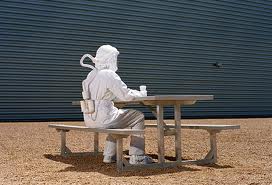 Even though this EcoNews article is about air poisons that result from fossil fuel production, it applies to just about any combustion source, including cement plants, manufacturing plants, vehicles, and so on. It's a pretty good top ten list, although you wonder why Dioxins and Furans got left off, since they're toxic by the gram instead of pound. Also missing is Particulate Matter as a stand alone threat, although it gets a shout out as a by-product. Nevertheless, these are the among the most dangerous pollutants that have caused and are still causing a lot of problems in North Texas and elsewhere:
Even though this EcoNews article is about air poisons that result from fossil fuel production, it applies to just about any combustion source, including cement plants, manufacturing plants, vehicles, and so on. It's a pretty good top ten list, although you wonder why Dioxins and Furans got left off, since they're toxic by the gram instead of pound. Also missing is Particulate Matter as a stand alone threat, although it gets a shout out as a by-product. Nevertheless, these are the among the most dangerous pollutants that have caused and are still causing a lot of problems in North Texas and elsewhere:
1. Benzene
Benzene is a well-established carcinogen with specific links to leukemia as well as breast and urinary tract cancers. Exposure to benzene reduces red and white blood cell production in bone marrow; decreases auto-immune cell function (T-cell and B-cells); and has been linked to sperm-head abnormalities and generalized chromosome aberrations.
Benzene is one of the largest-volume petrochemical solvents used in the fossil fuel industry. It is a major component in all major fossil fuel production: oil, coal and gas. People are exposed to it from inhaling automobile exhaust and gasoline fumes, industrial burning such as oil and coal combustion, and exposure to fracking fluids.
There's a recent Emory University study concluding that risk for leukemia fell with every mile between a person's home and facilities that release benzene.
2. & 3. Sulfur Dioxide (SO2) and Nitrogen Oxides (NOx)
Sulfur dioxide (SO2) and nitrogen oxides (NOx) are two primary examples of particle-forming air pollutants (particulate matter). Particulate matter is known to contribute to serious health problems, including lung cancer and other cardiopulmonary mortality. SO2 and NOx are both highly toxic to human health, and contribute directly to thousands of hospitalizations, heart attacks and deaths annually.
SO2 is particularly dangerous for children. Studies correlate SO2 emissions from petroleum refineries—even in lower exposure levels over time —to higher rates of childhood asthma in children who live or attend school in proximity to those refineries. Similarly, small particles of NOx can penetrate deeply into sensitive lung tissue and damage it, causing premature death in extreme cases. Inhalation of such particles is associated with emphysema and bronchitis.
4. Petroleum Coke (Pet Coke)
Pet coke is a by-product of oil processing that's also used as a fuel. It's a heavy dust which resembles coal. It's burned in power plants and cement plants. It contains dozens of dangerous chemicals and heavy metals, including chromium, vanadium, sulfur and selenium. It's a huge contributor to particulate mater and NOx and SOx formation
5. Formaldehyde
Formaldehyde is a carcinogen with known links to leukemia and rare nasopharyngeall cancers, according to the International Agency for Research on Cancer. Formaldehyde is highly toxic regardless of method of intake. It is a potent allergen and genotoxin. Studies have linked spontaneous abortions, congenital malformations, low birth weights, infertility and endometriosis to formaldehyde exposure. Epidemiological studies link exposure to formaldehyde to DNA alteration. It is also contributes to ground-level ozone.
Independent studies, have detected dangerous levels of formaldehyde in both wastewater and ambient air emissions from fracking operations. One researcher, with the Houston Advanced Research Center, said reading from one test site in North Texas, “astoundingly high,” and, “I’ve never heard of ambient (formaldehyde) concentrations that high… except in Brazil.”
6. Polycyclic Aromatic Hydrocarbons (PAHs)
In actuality, this is not a single listing—polycyclic aromatic hydrocarbons (PAH) is an entire class of toxic chemicals, linked together by their unique chemical structure and reactive properties.
Many PAHs are known human carcinogens and genetic mutagens. In addition, there are particular prenatal health risks: prenatal exposure to PAHs is linked to childhood asthma, low birth weight, adverse birth outcomes including heart malformations and DNA damage.
Additionally, recent studies link exposure to childhood behavior disorders; researchers from Columbia University, in a 2012 Columbia University study, found a strong link between prenatal PAH exposure and early childhood depression. Infants found to have elevated PAH levels in their umbilical cord blood were 46% more likely to eventually score highly on the anxiety/depression scale than those with low PAH levels in cord blood. The study was published in the journal Environmental Health Perspectives.
7. Mercury
Mercury is a dangerous neurotoxin emitted from coal-fired power plants and any other combustion source using coal for fuel – like the Midlothian cement plants. It damages the brain and the nervous system either through inhalation, ingestion or contact with the skin. It is particularly dangerous to pregnant women and children. It is known to disrupt the development of the in-vitro brain. In low doses, mercury may affect a child’s development, delaying walking and talking, shortening attention span, and causing learning disabilities. High dose prenatal and infant exposures to mercury can cause mental retardation, cerebral palsy, deafness and blindness. In adults, mercury poisoning can adversely affect fertility and blood pressure regulation and can cause memory loss, tremors, vision loss and numbness of the fingers and toes.
One out of every six women of childbearing age in the U.S. have blood mercury levels that could be harmful to a fetus, according to EPA reports. The EPA estimates that 300,000 children are born each year at risk for significant development disorders due to mercury exposure.
8. Silica (Silicon Dust/Sand)
Crystalline silica (“frac sand”) is a known human carcinogen; breathing silica dust can lead to silicosis, a form of lung disease with no cure. This is a hazard in the cement industry and threat to those living downwind of cement plants, and now it appears to be one for natural gas roughnecks and adjacent homeowners as well.
Silica is commonly used, in huge amounts, during fracking operations. Each stage of the process requires hundreds of thousands of pounds of silica quartz–containing sand. Millions of pounds may be used for a single well.
The presence of silica in fracking operations, simply put, is a major safety risk with a high likelihood of dangerous exposure. Case in point: researchers from the National Institutes of Occupational Safety and Health (NIOSH) recently collected air samples at 11 fracking sites in five different “fracking states” (CO, ND, PA, TX and AR) to evaluate worker exposure to silica. Every single site had measures higher than the NIOSH threshold for safe exposure—so high, in fact, that about one-third of the samples collected were even above the safe threshold for wearing a safety respirator mask. This was reported in May 2013 in the Journal of Occupational and Environmental Hygiene.
9. Radon
Radon is a colorless, odorless, tasteless radioactive gas which causes lung cancer. It is the second largest cause of lung cancer in the U.S. after cigarette smoking. About 20,000 people per year die from lung cancer attributed to radon exposure according to the National Cancer Institute. Further, there is no known threshold below which radon exposures carries no risk.
Radon exposure can come from a variety of natural sources. However, fracking (natural gas) represents a significant new and increased source of radon exposure to millions of citizens. Radon is released into local groundwater and air during fracking operations. It also travels through pipelines to the point of use—be it a power plant or a home kitchen.
The science behind radon release and exposure is complex but explained well here by Christopher Busby, the Scientific Secretary of the European Committee on Radiation Risk, who warns that radon dangers from fracking “have not been addressed properly (or at all) by the environmental impact statements published by the operators, or by the Environmental Protection Agency in the USA.”
10. Hydrofluoric Acid (HF) / Hydrogen Fluoride
Hydrofluoric acid (HF) is “one of the most dangerous acids known.” HF can immediately damage lungs, leading to chronic lung disease; contact on skin penetrates to deep tissue, including bone, where it alters cellular structure. HF can be fatal if inhaled, swallowed, or absorbed through skin.
The senior laboratory safety coordinator at the University of Tennessee said, “Hydrofluoric Acid is an acid like no other. It is so potent that contact with it may not even be noticed until long after serious damage has been done.”
Hydrofluoric Acid is a common ingredient used in oil and gas extraction.
Numerous studies, including recent ones conducted by both The Center for Public Integrity (CPI) and the United Steelworkers Union (USU) cite the oil industry’s abysmal safety record as a high risk factor for a major HF accident; over the past decade, more than 7,600 accidental chemical releases from refineries have been reported by the industry. In the past three years alone, a total of 131 “minor” accidents involved HF.
TXI Stock Takes a Dive, New North Texas Cement Plant on Way?
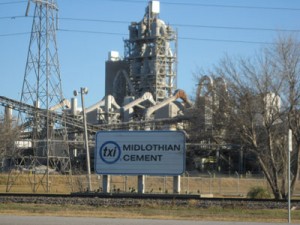 Last Wednesday TXI stock didn't do as well as Wall Street thought it should for the quarter and the result was about a 10% drop in value over one day's trading. On a Thursday conference call, CEO Mel Brekhus defended the company's prospects, including the opening of its new Central Texas plant, saying it "was the most successful of any he had been involved with in his career." We imagine that's right since the only other plant the company has built recently was Kiln #5 in Midlothian which faced opposition from Downwinders and others in the early part of the last decade.
Last Wednesday TXI stock didn't do as well as Wall Street thought it should for the quarter and the result was about a 10% drop in value over one day's trading. On a Thursday conference call, CEO Mel Brekhus defended the company's prospects, including the opening of its new Central Texas plant, saying it "was the most successful of any he had been involved with in his career." We imagine that's right since the only other plant the company has built recently was Kiln #5 in Midlothian which faced opposition from Downwinders and others in the early part of the last decade.
But most intriguing from DFW residents' point of view was the hint that Brekhus casually dropped toward the end of the call that the company was thinking about "increasing capacity" in North Texas. You know what that's code for – a new cement kiln.
Midlothian has been home to the nation's largest concentration of cement manufacturing for a long time, but such an addition would solidify its position for decades to come. That's because these days kilns come in one size – very, very large. A new TXI kiln would be massive in all respects. Air pollution would go up considerably, possibly canceling out some gains that have been made by the shutting down of the seven older wet Midlothian kilns that were ground zero for waste-burning from 1986 to 2008. Particulate Matter, smog-forming pollution and more exotic poisons like Dioxins would increase substantially.
Moreover, TXI might be looking for new ways to make money besides making cement – just like they did when they turned their kilns into hazardous waste incinerators for profit. Around the world the cement industry is focusing a lot of effort into becoming waste incinerators for municipal solid wastes, medical wastes and "unrecyclable plastics." Just like they did when they were burning hazardous waste, they charge customers for the right to burn their garbage. TXI recently expanded their list of fuels to include car parts and plastics. Might a new kiln increase the need to develop even larger markets for waste to burn?
It could be PR talk for the investors or reflect real corporate thinking at TXI headquarters. As part of their planning, executives would be advised to also think about the opposition to such a plant now. Midlothian is a different place than it was even 13 years ago, much less 25. People who've moved there recently might not want to see a new source of air pollution, especially one devoted to being a garbage burner. It's not quite the company town it was. And instead of facing a fledgling group, they'd be up against an organization that knows how to win the war. Stay tuned.
Your’re Downwind of Lots of Burning Trucks
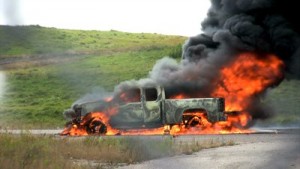 A funny thing happened to Dallas Morning News automobile columnist Terry Box while he was out test driving a new Dodge pick-up truck – it self-immolated and burned to ashes on the side of the road. As he writes about it, his experience is both funny and terrifying. But something he noted in how cars and trucks are made these days caught our eye:
A funny thing happened to Dallas Morning News automobile columnist Terry Box while he was out test driving a new Dodge pick-up truck – it self-immolated and burned to ashes on the side of the road. As he writes about it, his experience is both funny and terrifying. But something he noted in how cars and trucks are made these days caught our eye:
"Open the hood of your late-model car or truck, and you’ll see a half-acre of plastic — actual engine pieces like valve covers, caps and containers for various liquids.
Thirty years ago, most of the pieces under the hood were metal and resistant to fire.
A fire in a modern vehicle burns fast and furiously. What’s intact for the moment can be gone or enveloped in toxic smoke in a matter of seconds."
Yep. When we've described the lovely new cement additive called ASR – Auto Shredder Residue – we've often talked about all the vinyl seats, dashboard and switches that get stipped out of a car and shredded, then thrown into a cement kiln. We really haven't talked about all the plastic in the engine compartment that would also be included in this new "fuel" that TXI has already been permitted to burn at its Midlothian cement plant.
As more and more of every car is made of "soft materials" – that is, not metal – more and more of it becomes fodder for cement kilns. This is material that could be recycled but isn't, and as long as it's cheaper just to burn it, there won't be amrket for recycling it.
Here's the thing, burning plastic creates bad kinds of pollution, including the creation of Dioxin, one of the most potent posions ever discovered by science. The same "toxic smoke" Terry Box saw pouring off of his burning Ram pick-up is created when you throw the same plastic parts into a cement kiln. The cement industry would like you to think that all of that is taken care of by the polluton control measures installed at the kilns, but it's not. There's no real time Dioxin montoring, much less any kind of monitoring for the host of other exotic fumes coming off burning plastic of various kinds. They barely even know what or how to test for such pollutants, but that doesn't keep the cement industry from marketing its kilns as "Long, Hot, and Good for America"™
If you're an old-timer, you might remember an earlier episode or two that occurred when the cement industry, including TXI, assured everyone that it could burn hazardous waste and make it completely disappear into water vapor. Remind us, how did that turn out?
The Dose No Longer Makes the Poison, But We Regulate It As if It Does
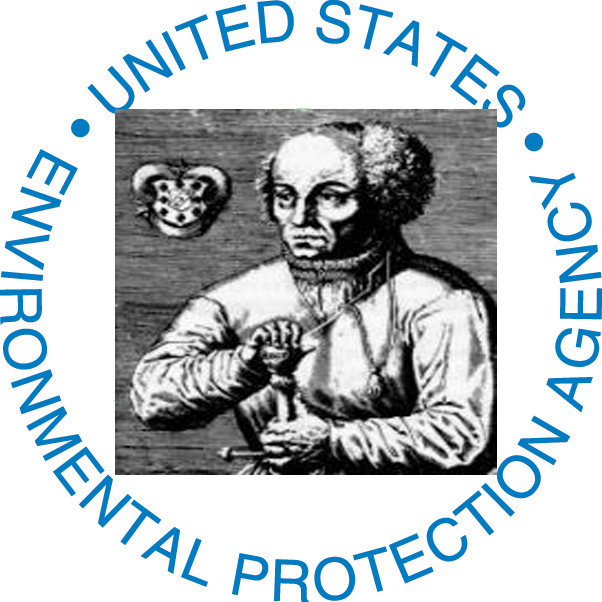 It may come as a shock, but the EPA and industry view exposures to toxic chemicals in basically the same way that a famous 16th-Century occultist named Paracelsus did over 500 years ago: The amount of exposure to a chemical determines its toxicity; the higher the dose, the more toxic it is. The lower the dose, the more benign. "The dose makes the poison."
It may come as a shock, but the EPA and industry view exposures to toxic chemicals in basically the same way that a famous 16th-Century occultist named Paracelsus did over 500 years ago: The amount of exposure to a chemical determines its toxicity; the higher the dose, the more toxic it is. The lower the dose, the more benign. "The dose makes the poison."
This approach says there's a linear one-to-one relationship between volume and harm. It's the basis of all federal, state and local environmental health regulation. It's what drives government "risk assessments." It's what allows there to be such things as "safe levels" of things that don't sound very safe.
But, what if this approach didn't capture all of what was going on physiologically between poison and victim? What if there were different effects happening at the cellular level? What if, like the Renaissance-born theory of Newtonian physics, it couldn't account for phenomenon on a smaller-scale because it didn't have the ability to see it? What if there were certain poisons that,
"depict a weird world of endocrine disruption that is as different from traditional toxicology as quantum mechanics is from the staid clockwork of Newtonian physics. When even minuscule quantities of BPA and other disrupters interact with hormone receptors at crucial moments in development — activating, jamming, hijacking or otherwise messing with their normal function — they can give rise to strange-looking experimental results, especially when other hormones are thrown into the mix."
From the journal Nature comes a case study in why no self-respecting thinking person would trust the current regulatory system to give them the final word on whether any given chemical exposure is "safe" or not.
A citizen can't underestimate the kind of threat this research presents to the Environmental Industrial and Legal Complex. Every permit ever written and awarded. Every environmental law every passed. They all depend on a Paracelsusian view of the world. Prove a different world exists and it turns everything upside down.
"A growing number of academic researchers are making just such a claim for endocrine disrupters, a large group of synthetic chemicals able to interact with cellular hormone receptors. These compounds, which range from the common weed killer atrazine and the plasticizer bisphenol A (BPA) to the antibacterial agent triclosan (used in cleansers) and the vineyard fungicide vinclozolin, don't play by the usual rules of toxicology. On the basis of conventional high-dose testing, regulators have set maximum acceptable levels for each of them that assume all doses below that level are safe. But academic researchers who have studied a wider range of doses, including very low ones found in the everyday environment, say that their experiments usually do not generate the tidy, familiar 'ski-slope' dose-response graphs of classic toxicology. Instead, most endocrine disrupters have 'non-monotonic' dose-response curves, meaning that their slopes change at least once from negative to positive, or vice versa, forming 'U' shapes, inverted 'U's or even stranger shapes that resemble undulating Chinese dragons."
It's not just endocrine disruptors that are challenging tradition. We're already seeing the contradiction between the latest science and regulations when it comes to old-fashioned poisons like lead and soot. There's a scientific consensus among the frontline researchers that there's no safe level of exposure to either one of these toxic substances, And yet, permits are still being written to allow what regulators claim are "safe levels" of them to be spewed into the air and our lungs.
Locally, UT Southwestern epidemiologist Dr. Robert Haley's groundbreaking work on Gulf War Syndrome has found similar effects in studying exposure of veterans to very low doses of nerve agents. Levels of substances that weren't supposed to make people sick individually seem to have a harmful synergistic effect when combined.
The more we can see what's happening at the smallest levels of things – whether its the vibrations of atoms in the chair you're sitting in, or the nuance of chemicals in the cells of a developing fetus – the more we find out that things are more complicated than they appear. Science is pushing us in the direction of a "Precautionary Principle" approach to regulating human chemical exposure. That's a radically different perspective that undermines the billions invested in the status quo allowing continual low level poisoning. After 500 years, maybe it's time to find a new model.
Dust from Homes Near Cement Kilns Have 2 to 9 X More Dioxin
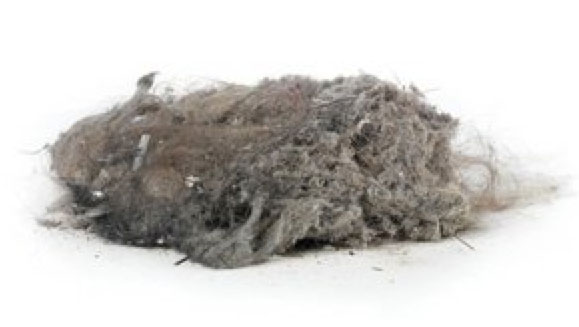 Here's some information the Midlothian Chamber of Commerce probably won't be linking to at their website.
Here's some information the Midlothian Chamber of Commerce probably won't be linking to at their website.
A national research team that includes personnel from The National Cancer Institute, Colorado Sate University, the University of Washington, and the Mayo Clinic has concluded that homes within one to three miles of cement plants contain house dust that contains 2 to 9 times more Dioxins than homes not located near kilns.
Dioxins are among the most toxic substances ever tested by EPA. Dioxin is the poison in Agent Orange. It's what made both Love Canal in New York, and Times Beach Missouri Superfund Sites. It's so toxic it's measured in grams, not pounds. It's a carcinogen and an endocrine disrupter. Like Lead and Particulate Matter, there is no known "safe" exposure level to Dioxin.
40 homes across four states were chosen from an earlier non-Hodgkin lymphoma study. Samples of dust were collected from vacuum cleaner bags and test for a variety of Dioxins (the testing for Dioxins is VERY expensive and that's one reason you don't see a lot of field tests for it). Four kinds of dioxin-emitting facilities identified by EPA were in close proximity to one or more of the sampled households – cement kilns, coal plants, sewage sludge incinerators, and medical waste incinerators. Proximity to major roadways was also considered a separate source. But "high concentrations" of Dioxins were only associated with homes near cement plants. Major roads also saw "elevated" levels, but not nearly as much as kilns.
The full study was recently published in the September edition of "Science of the Total Environment."
Midlothian currently hosts six active cement kilns. There were as many as ten up until 2008. It is the largest concentration of cement manufacturing in the nation. And all of DFW is downwind of it most of the year.
As we mentioned last week, a 1999 study by Barry Commoner and his group out of Washington University in St. Louis traced Dioxins from the TXI cement plant all the way to the Arctic Circle. So don't feel safe if you think you live far enough downwind not to be affected by the Midlothian plant plumes.
For years, Midlothian residents and others have been asking the federal government for a meaningful health effects and testing protocol for determining the total load of dioxins in and around these kilns. It hasn't come. Their requests were based on published higher incidents of certain kind of birth defects in Ellis County, as well as clusters of animal health effects observed by local ranchers and breeders. And these observations started when hazardous waste burning began in the mid-1980's. EPA has stated that waste-burning kilns release more dioxin than non-waste burning ones.
So it's important to remember that the astounding high concentrations of Dioxins that were located in homes in close proximity to a a cement kiln were linked to a kiln not burning hazardous waste. Granted, we don't know what kind of "non-hazardous wastes" it might have been burning, but the results begs the question about how much higher Dioxin levels might be in a place like Chanute, Kansas where Ash Grove's kiln is still burning hazardous wastes.
And it also once again points out why we can't be complacent about the kilns in Midlothian just because they quit burning the worst of the worst toxic wastes. Even without that practice, they pose an on-going clear and present danger to the region's public health from just their "routine" emissions. Now that all of them have or want permits to burn plastics and garbage, you could reasonably expect to see an increase in Dioxins and other forms of more exotic pollution spewing out of their tall smokestacks. And you know why their so tall don't you? So that the pollution they're releasing travels further downwind.
“How your great grandmother’s chemical exposures may affect you”
 In a study published this week, "rats exposed in the womb to five common environmental pollutants passed on DNA-changing attributes that persisted in causing ovarian cancer three generation removed from the original exposure."
In a study published this week, "rats exposed in the womb to five common environmental pollutants passed on DNA-changing attributes that persisted in causing ovarian cancer three generation removed from the original exposure."
It's another example of "epigenetics" – when harmful environmental exposures to one generation can skip a generation or two and show up as health effects decades later.
According to the new study, the five pollutants reprogram how DNA is expressed in the developing fetus' eggs, setting the stage for ovarian disease later in their life.
If you're a Vet, the news is worse. The U.S. Department of Defense helped select the pollutants based on potential exposures in military personnel. They included vinclozolin, a fungicide that's used in the wine industry; a pesticide mixture including permethrin and DEET; a plastic mixture including bisphenol A (BPA) and two widely used phthalates (DEHP and DBP); the industrial byproduct dioxin; and a hydrocarbon mixture called "jet fuel," which is used to control dust on road surfaces.
Researchers at Washington State University exposed pregnant rats to one of five different chemicals alone or in mixtures during a critical time of pregnancy when their daughter pups' eggs were developing. The pups were then mated with males from the same treatment group, and the resulting pups were bred yet again. Only the original generation of pregnant rats had been exposed to the chemicals. The adult daughters and great granddaughters of the dosed animals (called the F1 and F3 generations) were examined for ovarian disease.
In all exposure groups, both the daughter (F1) and great-granddaughter (F3) mice had fewer egg follicles in their ovaries compared to controls, indicating a reduced pool of available eggs. Both generations – but particularly the F3 animals – also had an increased number of ovarian cysts compared to controls.These findings are characteristic of Polycystic Ovarian Syndrome (PCOS) and Premature Ovarian Insufficiency (POI), which are believed to affect 18% of all women.
Other diseases, including allergies and asthma; liver, gastric, prostate and colorectal cancer; and psychiatric disorders are thought to have an epigenetic component. This is the first time that epigenetic changes have been shown in association with ovarian disease. This proof-of-concept study used higher doses of chemicals than what people would typically encounter. Future work is needed to investigate whether lower, more environmentally relevant chemical levels also affect ovarian disease across generations of the rodents.
Locally, we're surrounded by sources of one or more of these pollutants, especially phthalates, BPA, dioxin, and hydrocarbons. BPA is the subject of a lot of media attention and just yesterday, the FDA banned its use in sippy cups for infants. Frisco's Exide lead smelter has been a top ten dioxin polluter in Texas over the last decade. The cement plants in Midlothian are also large industrial sources of dioxin, and new permits to burn more "non-hazardous" wastes that turn into hazardous emissions only ensure that will remain the case. On the ground, internal combustion engines from cars and the natural gas industry facilities in the Barnett Shale soak us in hydrocarbons.
Despite the documentation of the epigenetic effect of certain pollutants in recent years, this impact has not yet been incorporated into any risk assessment of a polluting facility by any environmental or public health agency in the U.S. We may be planting the seeds for epidemics of all kinds in the next 20-50 or more years, and it's all perfectly legal now. Once again, the science is way out in front of the regulations. That's why citizens must arm themselves with the latest research. You won't be getting updates on this stuff from EPA or TCEQ. That's also why it's ridiculous for anyone to speak about the "over-regulation" of polluters in this country. We're nowhere close to understanding what the long term consequences are of our actions in allowing so many chemicals into the environment to mix and match with our own biology. In this larger public health sense, pollution is still very much under-regulated in the United States.
